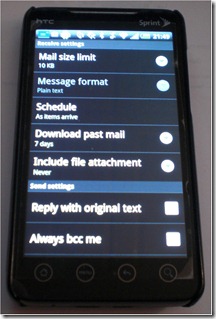The debate that products are services rages on. Are you a Product Company, or a Service Company? Do you sell services with your products? Or, the wonderful finger-pointing phrase, “that’s a product problem, I am in the services department.”
All Products Are Services
Today, in the connected economy driven by customer experience, there’s no difference. The line between the physical product, and services is blurred. I’m not the first to recognize this, but I do believe that the majority do not embrace it. I hope this story helps convince you. And, if we are lucky, companies will someday stop artificially structuring organizations and delivery of the two – because customers just don’t care about the internal monkey-business – they just want optimal customer experiences.
You can neither buy, nor sell, one with out the other. If you don’t understand this, stop reading now. In the digital economy – when service levels fall below customer expectations, it doesn’t matter how good the physical product is or was, it is a failure. And, in the socially connected digital economy, this leads to disaster.
I have one of the most advanced mobile phones on the planet. It’s an Android device from HTC. My carrier is Sprint, and I use ActiveSync across a number of devices, and expect to get email via ActiveSync, including on my phone. Recently I contacted Sprint about being unable to see HTML mail (graphically) on the ActiveSync Android, and HTC software-provided mail application on the phone.
I finally engaged in a conference call with senior support people from Sprint, HTC, Google (Android) and Microsoft (ActiveSync). Everyone knew about the flaw, but not one could tell me where the failure was. More seriously, no one accepted responsibility for it. Google said it was a problem with either Sprint in tweaking Android, or with Microsoft with their ActiveSync technology. HTC said they only build the hardware, so it must be Android or Sprint’s OEM tweaking, or Microsoft’s ActiveSync platform, and Sprint said they were just the Carrier with no responsibility for the software – even though they were the channel for updates. Microsoft had the least involvement, as they didn’t touch the phone, it’s OS, or the apps on it – but were also not very helpful. There must be thousands of ActiveSync users reporting this problem and wasting the time of that many people should be reason enough to finding a solution as much as HTC, Google, and Sprint.
 I spent $499 for a “smart” phone, that could not perform one of the most basic functions. It converted every HTML email message to plain text – making it completely unusable and unreadable. It was such an obvious flaw, that everyone recognised it as I walked them through the settings page, and showed that the Mail Format setting was greyed out, and set to “Plain Text.” Could it have really got past Quality Assurance and Testing this way?
I spent $499 for a “smart” phone, that could not perform one of the most basic functions. It converted every HTML email message to plain text – making it completely unusable and unreadable. It was such an obvious flaw, that everyone recognised it as I walked them through the settings page, and showed that the Mail Format setting was greyed out, and set to “Plain Text.” Could it have really got past Quality Assurance and Testing this way?
The best direction given was the app might get fixed in a future revision of the software, and if I needed a solution now, there were a number of reliable ActiveSync email apps supporting HTML mail for purchase on the Android App Store. After spending $499 that was advertised to perform this function I had little confidence, patience, willingness and interest in spending another $50 on an additional application.
Support blogs list many other complaints so I’m not alone as an unhappy customer with either of the four vendors. This is a “service failure”, not a product failure. The product IS the service.
I have to ponder, though – is this a subversive protectionist war between Google and MSFT thinking that I might switch to Google Mail, and drop ActiveSync (and thereby all MSFT) tools in my communications? Not likely. In my mind the winning vendor will build the bridge, and provide excellent service, and new innovation in the long run. That will win more customers, than pointing the finger. I could see Microsoft stepping up and building the “better ActiveSync app” for Android, and giving it away FREE! that would build goodwill for me and others like me to stay with MSFT.
That’s the kind of service that will ensure I buy a Nokia Lumia 900, and switch to Microsoft Windows Phone in a few months when my contract is up!
What do you think? In the connected economy, can any company be just a product company? Are all products now “services?”










Andrew,
I think you indirectly describe the reason, like them or not, why Apple is currently so successful.
Apple owns hardware, software, OS, all the relevant integration, and provides clear leadership to the market place.
Yes, people like the shiny new baubles created by Apple. But there are other shiny baubles out there arguably just as nice if not nicer.
The key is the ‘holistic’ end-to-end experience. It works, works consistently across devices, and does what the user wants.
In the space, there’s no one else who has the ability to overcome the fragmentation leading to your experience. Everyone’s fighting to be top dog, yet none are a ‘hands-down’ leader. The result, no one to fall in line with and a perpetuation of the drama you described.
Cheers,
JT…